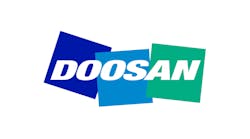Attendance at the EMO 2005 trade show in Hanover, Germany, that ended on September 21, totaled more than 160,000 visitors. Visitors came from 82 countries and the nearly 2,000 exhibitors came from 39 countries to see and to display machine tools, equipment, tooling and services over the course of its seven-day run.
In attending press conferences, show-related events and in interviews, common themes kept popping up as manufacturers from around the globe spoke.
The first is that manufacturing industries are expected to continue to grow through the end of this year and throughout 2006. While growth estimates commonly ranged from 4 to 12% over the course of the next 15 months, no one said they expect recession or declines in growth.
There are regional differences, of course: Everyone expects the growth of manufacturing in China to outstrip every other nation, and almost everyone foresees growth in India following closely behind; while growth in Europe and the U.S. is expected to continue at reduced levels, in the 4 to 6% range, depending on who is doing the forecasting.
Second, and as a slight surprise, many people are beginning to see the boom in manufacturing in China as nearing a point of equilibrium in terms of China capturing manufacturing business from other countries.
That is to say, many expect China to stop being a worldwide drain on manufacturing jobs, and they support that line of thought by pointing out that manufacturers in China are seeing increased pressure to produce for their domestic markets, rather than for export; and that the companies that moved manufacturing to China first may have already derived the greatest benefits from doing business there; and that logistics are becoming more challenging as China's transportation and support-industry infrastructure is being strained.
The third prominent theme may be the best known: Growth and global competition are underlining the need to become more efficient and to increase production outputs in every way.
This last point becomes a self-sustaining prediction from Economics 101: Growing economies will feed competition, and the fiercest competitors will win, whether they are in China, India, North America or Europe.
Ultimately, that was what EMO 2005 was all about. The exhibits of the latest developments for machine tools, ancillary equipment, tooling and services were designed to give manufacturers a glimpse of the technologies that they can use-or face-in the brutal competition to come.
American Machinist will have a full report on the EMO 2005 trade show in its November issue.
